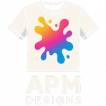Removing printed or adhesive labels from glass can be frustrating, especially when you want to reuse a bottle or restore a clean surface. Whether it’s a paper sticker, plastic wrap, or a screen-printed logo, each type of label needs a different approach.
This guide combines science-backed methods, real-world testing, and safety best practices to help you clean glass effectively without scratching or etching the surface.
Quick Summary For Removing Labels
Paper labels
Soak labels in hot, soapy water for 20–30 minutes.
Plastic labels
Apply heat (hair dryer) and wipe with rubbing alcohol or acetone.
Screen-printed or painted labels
Soak overnight in vinegar or use acetone for faster results.
Why Labels Stick: Understanding Adhesion Types & the Science Behind Them
Labels bond to glass via adhesion and surface tension. Understanding which type you’re dealing with determines the safest and most effective removal method.
- Paper labels typically use pressure-sensitive acrylic adhesives that soften in warm water or alcohol [add citation]
- Plastic labels often use EVA (ethylene-vinyl acetate) or hot-melt glues that respond better to heat and non-polar solvents like acetone or naphtha [add citation]
- Painted-on or screen-printed labels are made with ceramic frit inks, fired in a kiln at 500–600 °C, creating a thin enamel layer that bonds permanently to glass [add citation]
Comparison Table: Methods for Removing Labels from Glass
| Paper | Plastic | Screen-Printed | |
|---|---|---|---|
| Primary Method | Soak in hot, soapy water | Apply heat, then solvent | Soak or dissolve paint layer |
| Tools Needed | Bowl, sponge | Hairdryer, cloth | Razor, scraper |
| Solvent / Cleaner | Dish soap | Rubbing alcohol or acetone | Vinegar or acetone |
| Safety Notes | Low-risk | Ventilate area | Wear gloves |
| Time Required | 20–30 min | 10–15 min | Overnight |
Step-by-Step Methods
Not all labels are created equal. The type of label determines the method you’ll need to use for safe and effective removal, as each one responds differently based on its material and how it’s applied to the glass.
1. Removing Paper Labels (Water-Soluble Adhesives)
Paper labels are generally the easiest to remove because they absorb water and other liquids, making the adhesive underneath easier to loosen. By soaking the glass in warm soapy water, the label will soften and peel off with minimal effort. For particularly stubborn paper labels, rubbing alcohol or a gentle abrasive like baking soda can help break down the adhesive more effectively. This method is not only safe but also ideal for delicate glass surfaces.
2. Removing Plastic or Vinyl Labels
Plastic labels present more of a challenge because they don’t absorb liquids like paper does. Simply soaking them in water often isn’t enough as the liquid cannot penetrate the plastic to get to the adhesive. In most cases, a combination of heat and solvents works best. You can start by heating the label with a hairdryer to soften the adhesive. Once the glue is pliable, gently peel away the label, and if needed, use a solvent such as rubbing alcohol or acetone to remove any leftover glue residue. However, be cautious with acetone on sensitive surfaces, as it may damage certain finishes.
3. Removing Painted-On or Screen-Printed Labels
Painted-on labels are the most stubborn type of label to remove, as they are fused directly onto the glass. These labels typically require more time, elbow grease, and stronger chemicals to break down the paint. A good starting point is soaking the label in vinegar (either apple cider or white vinegar), which helps soften the paint. After soaking, you can use a razor blade or scraper to carefully remove the paint. For more resistant labels, acetone or nail polish remover may be necessary to dissolve the paint further, though multiple rounds of soaking and scraping may be needed for complete removal. Always take care when using sharp tools to avoid scratching the glass.
Troubleshooting & Failure Modes
What to do if residue persists, if paint smears, if glass scratches.
Include conditional language (“If the label curls but residue remains, use…”) — great for conversational retrieval.
Personal Safety Essentials
When using solvents like acetone or alcohol, a few simple precautions go a long way:
- Gloves: Wear nitrile gloves (resist solvents better than latex).
- Eye protection: Use basic safety glasses to guard against splashes.
- Ventilation: Work near an open window or outdoors — acetone and alcohol give off flammable vapors.
